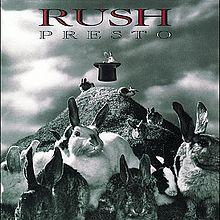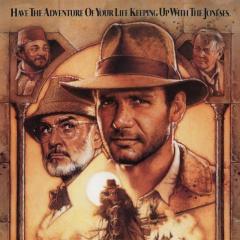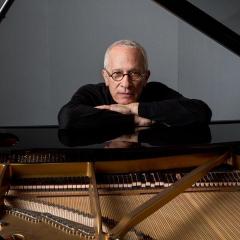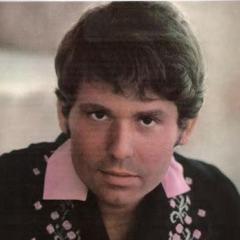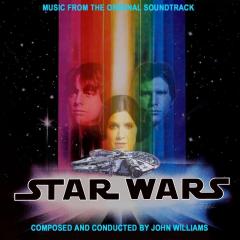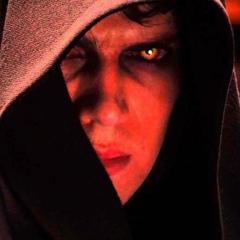-
Posts
349 -
Joined
-
Last visited
Reputation Activity
-
 Trope got a reaction from Stark in Do you think Saving Private Ryan is a masterpiece?
Trope got a reaction from Stark in Do you think Saving Private Ryan is a masterpiece?
I still haven't seen the film, and whilst I don't think I would call the score a "masterpiece" by JW's standards, it is extremely beautiful in parts and contains some of Williams' best melancholy/reflective Americana writing. The Last Battle (5:07-end) is absolutely gorgeous. I adore the contrapuntal trumpet writing, and those woodwind chords at 7:19 are wonderful.
-
 Trope reacted to Jean-Baptiste Martin in The Official James Horner Thread
Trope reacted to Jean-Baptiste Martin in The Official James Horner Thread
I don't want to launch pre-orders if the book isn't 100% finished, to avoid a long wait between the end of pre-orders and the shipping.
The book is 99.9% finished.
As I explained a few weeks ago on FSM, I'm waiting for authorization to publish images of recording sessions. I need the studio's permission. They've asked me to send them the chapter. I did so in September.
Last week I received my chapter with the requested changes. So things are moving ahead!
I hope to launch pre-orders in May.
-
 Trope got a reaction from Jean-Baptiste Martin in The Official James Horner Thread
Trope got a reaction from Jean-Baptiste Martin in The Official James Horner Thread
The new website looks amazing! http://jameshorner-filmmusic.com
-
 Trope got a reaction from Naïve Old Fart in The Official James Horner Thread
Trope got a reaction from Naïve Old Fart in The Official James Horner Thread
This most recent update may not be completely finished yet - For a few days, the site read "maintenance mode is on" and nothing could be accessed.
-
 Trope got a reaction from Bellosh in Do you think Saving Private Ryan is a masterpiece?
Trope got a reaction from Bellosh in Do you think Saving Private Ryan is a masterpiece?
I still haven't seen the film, and whilst I don't think I would call the score a "masterpiece" by JW's standards, it is extremely beautiful in parts and contains some of Williams' best melancholy/reflective Americana writing. The Last Battle (5:07-end) is absolutely gorgeous. I adore the contrapuntal trumpet writing, and those woodwind chords at 7:19 are wonderful.
-
 Trope got a reaction from Naïve Old Fart in The Official James Horner Thread
Trope got a reaction from Naïve Old Fart in The Official James Horner Thread
The new website looks amazing! http://jameshorner-filmmusic.com
-
 Trope got a reaction from Edmilson in The Official James Horner Thread
Trope got a reaction from Edmilson in The Official James Horner Thread
The new website looks amazing! http://jameshorner-filmmusic.com
-
 Trope reacted to Bellosh in Do you think Saving Private Ryan is a masterpiece?
Trope reacted to Bellosh in Do you think Saving Private Ryan is a masterpiece?
Besides your take on the film, I once had this same opinion on the score.
There's so much interesting stuff happening though. I promise.
-
 Trope reacted to Corellian2019 in The Ol' College Try
Trope reacted to Corellian2019 in The Ol' College Try
That cue was what convinced me that TTRL was probably his best work
-
 Trope got a reaction from Corellian2019 in The Ol' College Try
Trope got a reaction from Corellian2019 in The Ol' College Try
IMO The Thin Red Line is a lovely ambient and reflective work which is a nice stylistic contrast to the over-the-top 90s action music Zimmer was pumping out at the time.
If you're jumping into the score for the first time, I would echo the sentiment of listening to the OST first - It's very well put together, and touches on every major theme/style from the complete score (and some music not on the 2CD LLL main program). If you enjoy that, then you will be able to better appreciate the complete score. Some people find that the main program can drag at times, given most of the music is quite static (rhythmically and harmonically).
But for me personally, the calmness and stillness is what I love about the score, and when I'm in the right mood, there's nothing quite like listening to it and being enveloped by its peaceful tones. Also, any time woodwinds, harps and counterpoint appear in a Zimmer score, it's something to be celebrated.
"Airfield - Bell Flashback" (aka "Light" on the OST) is one of the most beautiful and tender pieces Hans has written. And I say all this as someone who still hasn't seen the film.
-
 Trope got a reaction from Andy in The Ol' College Try
Trope got a reaction from Andy in The Ol' College Try
IMO The Thin Red Line is a lovely ambient and reflective work which is a nice stylistic contrast to the over-the-top 90s action music Zimmer was pumping out at the time.
If you're jumping into the score for the first time, I would echo the sentiment of listening to the OST first - It's very well put together, and touches on every major theme/style from the complete score (and some music not on the 2CD LLL main program). If you enjoy that, then you will be able to better appreciate the complete score. Some people find that the main program can drag at times, given most of the music is quite static (rhythmically and harmonically).
But for me personally, the calmness and stillness is what I love about the score, and when I'm in the right mood, there's nothing quite like listening to it and being enveloped by its peaceful tones. Also, any time woodwinds, harps and counterpoint appear in a Zimmer score, it's something to be celebrated.
"Airfield - Bell Flashback" (aka "Light" on the OST) is one of the most beautiful and tender pieces Hans has written. And I say all this as someone who still hasn't seen the film.
-
 Trope reacted to Badzeee in JAWS - 2015 Intrada 2CD Release (Complete film tracks & original LP re-recording)
Trope reacted to Badzeee in JAWS - 2015 Intrada 2CD Release (Complete film tracks & original LP re-recording)
Back in stock (again)
-
 Trope reacted to crumbs in Disney Emporium releases Indiana Jones: The Complete CD Collection (Expected ship date is March 27, 2024.) No new expansions - Includes the previous Concord Records programmes plus KotCS and DoD OSTs
Trope reacted to crumbs in Disney Emporium releases Indiana Jones: The Complete CD Collection (Expected ship date is March 27, 2024.) No new expansions - Includes the previous Concord Records programmes plus KotCS and DoD OSTs
And here I was hoping they'd be incompetent enough to dump the complete recording sessions on CD by mistake.
-
 Trope reacted to Jurassic Shark in The Ol' College Try
Trope reacted to Jurassic Shark in The Ol' College Try
Worst idea ever to make a musical about a soundtrack specialty label.
-
 Trope got a reaction from Schilkeman in The Ol' College Try
Trope got a reaction from Schilkeman in The Ol' College Try
One of the most surprising ones for me was Horner’s The Mask of Zorro. I’ve tried over 5 times to sit down and listen to it, and every time I lose interest and think of other Horner scores that offer more of what I want from him. More robust action? The Rocketeer. More melodrama? Legends of the Fall. More romance? Braveheart.
I was shocked at how it didn’t resonate emotionally with me at all and I honestly think it’s down to the Spanish influence on the score, particularly the harmonies. I haven’t yet had the courage to try The Legend of Zorro or The 33.
-
 Trope reacted to Yavar Moradi in The Ol' College Try
Trope reacted to Yavar Moradi in The Ol' College Try
For what it's worth, I find myself drawn to play The Legend of Zorro far more than The Mask of Zorro.
My answer to this question might upset some people: Alan Silvestri's Back to the Future. Most of it is the definition of generic, to me. I don't like the main theme which repeats ad nauseam. I don't find it remotely interesting or engaging. It doesn't receive interesting development, for the most part. The score works well enough in the film (it certainly doesn't detract) but I think it could have been a lot better. BTTF3 is the only one of these scores that connects with me more, because it's a western and has new thematic material and variety.
Yavar
-
 Trope reacted to A. A. Ron in The Ol' College Try
Trope reacted to A. A. Ron in The Ol' College Try
Back to the Future is the first score I thought of as well.
La La Land is supposed to be a “great score?” I thought it was just a great record label.
At any rate, I don’t know how anyone can like film scores but not like Conan or LOTR.
-
 Trope got a reaction from A. A. Ron in The Ol' College Try
Trope got a reaction from A. A. Ron in The Ol' College Try
One of the most surprising ones for me was Horner’s The Mask of Zorro. I’ve tried over 5 times to sit down and listen to it, and every time I lose interest and think of other Horner scores that offer more of what I want from him. More robust action? The Rocketeer. More melodrama? Legends of the Fall. More romance? Braveheart.
I was shocked at how it didn’t resonate emotionally with me at all and I honestly think it’s down to the Spanish influence on the score, particularly the harmonies. I haven’t yet had the courage to try The Legend of Zorro or The 33.
-
 Trope reacted to Edmilson in The Ol' College Try
Trope reacted to Edmilson in The Ol' College Try
For everyone who have mentioned or will mention LOTR on this thread:
-
 Trope reacted to Jurassic Shark in The Ol' College Try
Trope reacted to Jurassic Shark in The Ol' College Try
The OST is missing the JW/Strauss cue. Unforgivable.
-
 Trope reacted to Bayesian in Hans Zimmer Appreciation Thread
Trope reacted to Bayesian in Hans Zimmer Appreciation Thread
Here’s an article that discusses it in a little detail: https://cointelegraph.com/news/hans-zimmer-writes-tron-theme-song. Apparently, the “song” had been under development since 2022 (although the end result sounds like Zimmer only worked on it since 8:00 this morning.)
Read the article. It quotes Zimmer on how this music represents the potential of Web3.0. The disconnect between what he says this song represents and the actual banality of the music itself is… well, it’s astonishing.
I really believe Zimmer has somehow managed to achieve the impossible — he’s transcended his corporeal form to become a being of pure marketing.
-
 Trope got a reaction from greenturnedblue in The Official La-La Land Records Thread
Trope got a reaction from greenturnedblue in The Official La-La Land Records Thread
There is some really beautiful atmospheric music that I adore in this expansion. Definitely not something I listen to from start to finish every day, but when I'm in the right mood for it, it is really fantastic. And I haven't even seen the film!
-
 Trope reacted to Richard Penna in The Official La-La Land Records Thread
Trope reacted to Richard Penna in The Official La-La Land Records Thread
I got an e-mail about 12 hours or so ago. I use gmail but we also have a family domain so it doesn't go directly there.
Doesn't seem like they're in the remotest urge to get TLW back in stock. I wonder if sales slowed after the initial buzz?
-
 Trope got a reaction from Edmilson in What are your non-Williams film score holy grails now?
Trope got a reaction from Edmilson in What are your non-Williams film score holy grails now?
I honestly would love to get a complete Finding Nemo release. That score means a lot to me, it was my first ever experience of Thomas Newman as a child. I’m still a little saddened that nothing came out for its 20th anniversary last year.
-
 Trope reacted to Richard Penna in What are your non-Williams film score holy grails now?
Trope reacted to Richard Penna in What are your non-Williams film score holy grails now?
Ah yes... Murray "I upload entire albums to my agent's website with no security, then get angry when fans love my music" Gold.

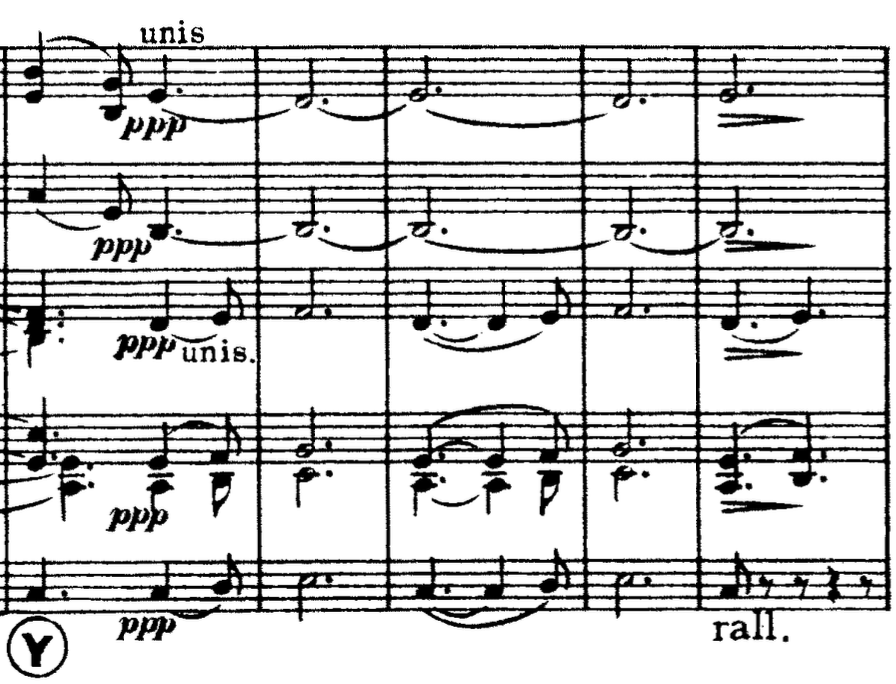
20thAnniversaryEdition.thumb.jpg.8f332140a7f08dd3051d720e581d69e5.jpg)
